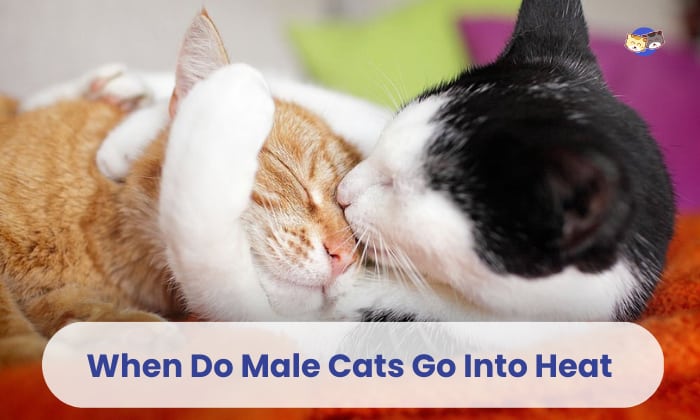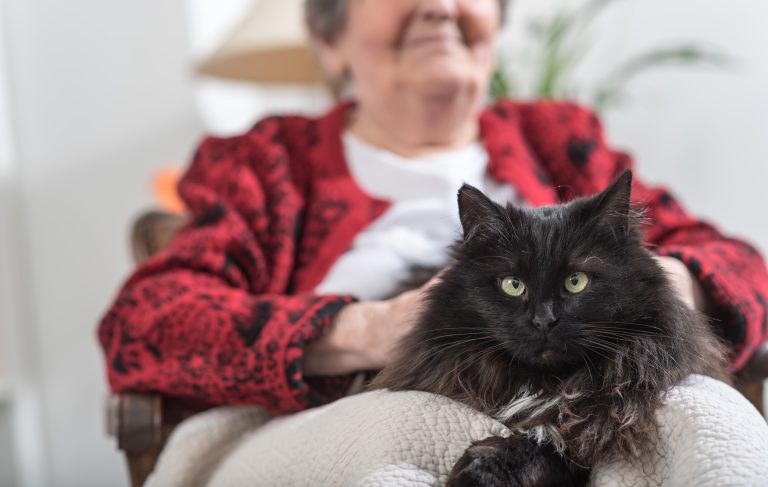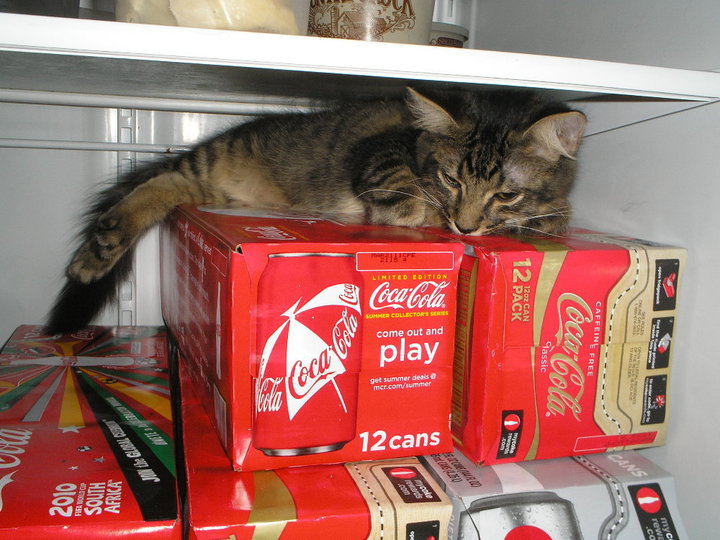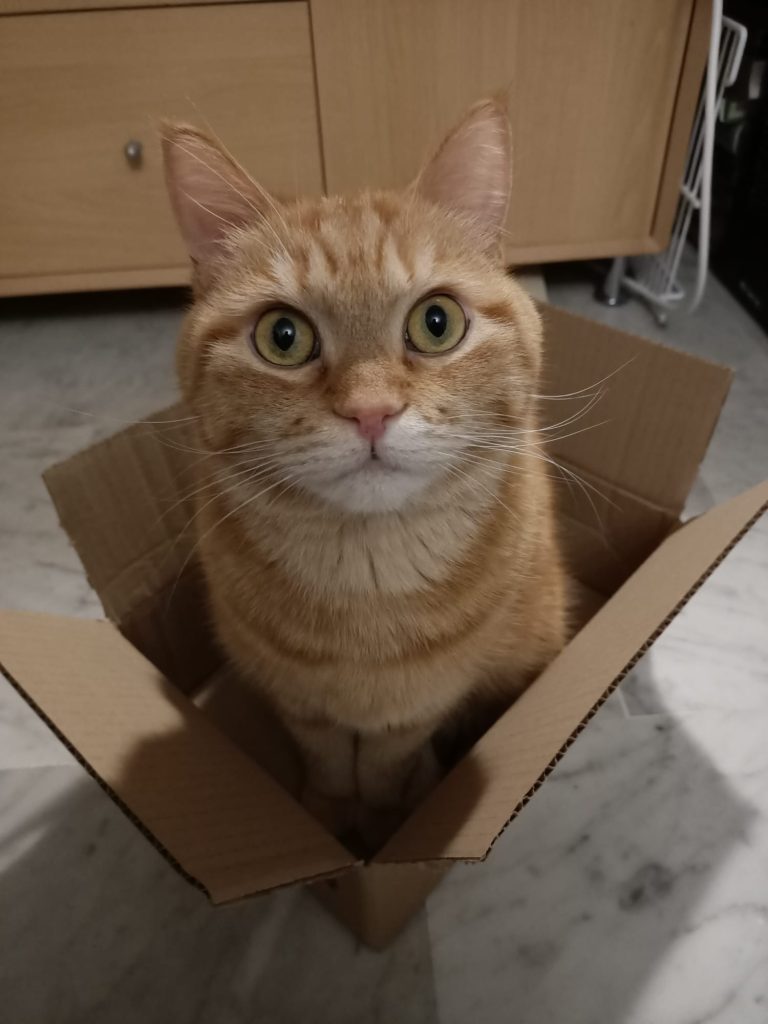Do Cats Understand Mirrors And Their Reflection?
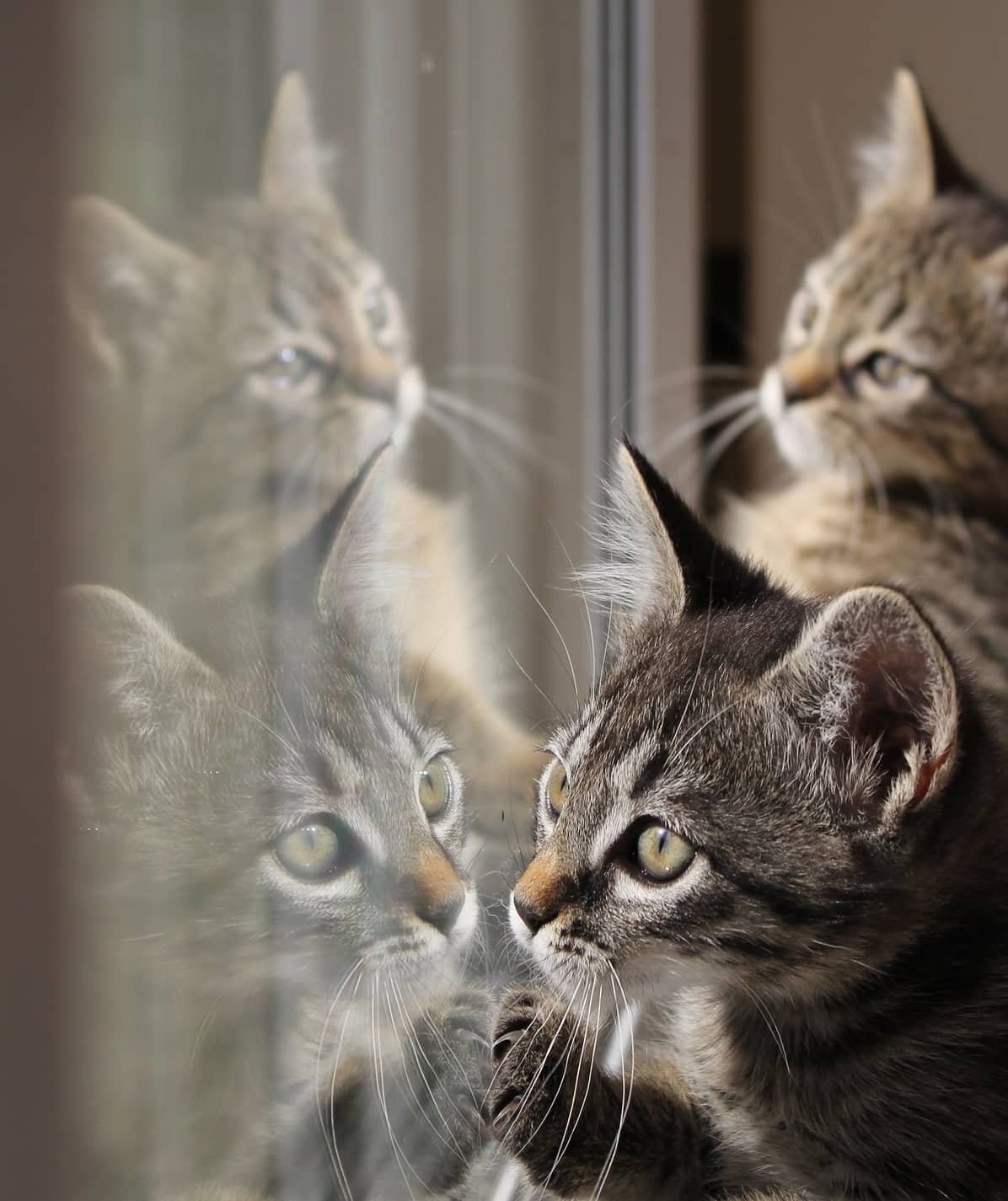
Cats do not understand mirrors and their reflection due to their inability to recognize themselves. Cats do not possess self-awareness, which is necessary to comprehend mirrors.
Cats are fascinating creatures that often exhibit curious behavior towards various objects in their environment. One particular item that may captivate their attention is a mirror. As humans, we can easily recognize ourselves in a mirror and understand that it is a reflection of our own image.
However, the question arises as to whether cats share the same comprehension. Do they recognize themselves when they gaze into a mirror? This topic has intrigued pet owners and researchers alike, sparking interest in understanding the cognitive abilities of our feline friends. We will delve into the fascinating world of cats and mirrors, exploring whether cats possess the ability to understand mirrors and their reflections.
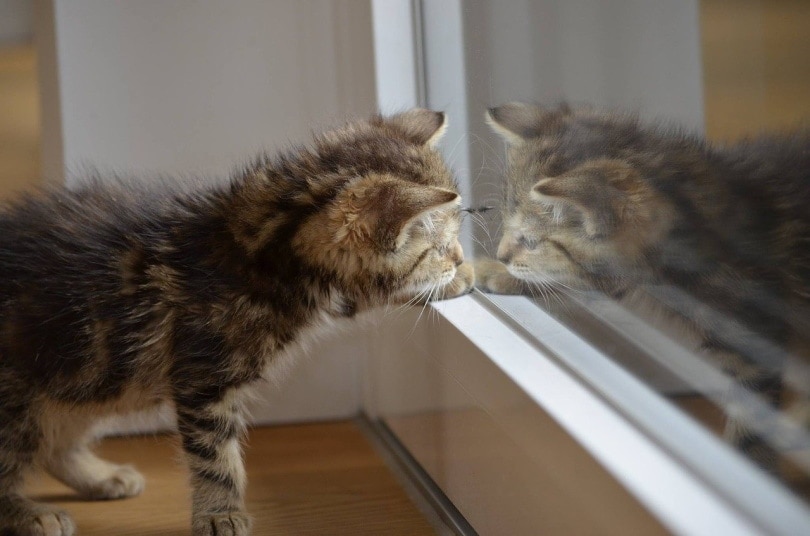
Credit: www.hepper.com
Do Cats Recognize Their Own Reflection In Mirrors?
Do Cats Recognize Their Own Reflection in Mirrors?
Study On Mirror Self-recognition In Cats
Curiosity gets the best of us when we catch a glimpse of ourselves in the mirror, but have you ever wondered how our feline friends react to their own reflections? A study conducted on mirror self-recognition in cats sheds light on this intriguing behavior.
| Study Findings |
|---|
| Researchers conducted an experiment using mirrors placed in front of cats. |
| They observed the cats for signs of self-recognition and how they interacted with their reflection. |
| The study revealed that most cats do not recognize their own reflection as themselves. |
| However, this doesn’t mean they lack curiosity or interest in mirrors. |
Cats’ Response To Seeing Their Reflection In Mirrors
When cats encounter mirrors for the first time, their reactions can be quite amusing. They may display a range of behaviors, depending on their personality and level of curiosity. Some common responses include:
- Staring intently at their reflection, as if trying to figure out the mystery in front of them.
- Pawing or batting at the mirror, thinking they’re engaging with another feline.
- Sniffing and nudging the mirror, attempting to interact with the unfamiliar sight.
- Backing away cautiously or hissing in confusion, perceiving the reflection as a threat.
These reactions may vary from one cat to another, but they all demonstrate their initial fascination with the mirrored image.
Awareness Of The Reflection As Their Own Image
While cats may find mirrors intriguing, most of them do not recognize the reflection as their own image. Unlike humans, who can identify themselves in mirrors, cats tend to view the reflection as another cat or an unknown entity. They lack the self-awareness required for mirror self-recognition.
However, there are exceptions to this generalization. According to the study mentioned earlier, some cats exhibited behaviors indicating a partial level of self-recognition. They may perform actions like grooming or looking behind the mirror to see if there is another cat present. These actions suggest a possible recognition of the reflection as an extension of themselves.
While cats’ reactions to seeing their reflection in mirrors can be amusing to observe, they generally do not recognize the image as their own. Nonetheless, their curiosity and interactive behavior towards mirrors continue to captivate both cat owners and researchers alike.
How Do Cats React To Mirrors?
Cats often show curiosity and confusion when faced with mirrors. They may react in different ways, from hissing and growling to trying to play with their own reflection, as they usually don’t understand the concept of a mirror and think it’s another cat.
Many cats eventually lose interest or become accustomed to the mirror’s reflection.
Curiosity And Investigation
When it comes to mirrors, cats are naturally curious creatures. Their keen senses often draw them towards shiny surfaces, sparking their interest in what lies within. Upon spotting their reflection for the first time, cats may approach the mirror cautiously, trying to understand the mysterious feline on the other side. They may tilt their heads, slowly moving closer, or even paw at the mirror in an attempt to interact with their newfound twin.
Cats’ fascination with mirrors can be quite amusing to witness. They might spend extended periods studying their reflection, seemingly engrossed in deep contemplation. It’s as if they’re trying to solve the puzzle of this “other” cat or figure out how someone else managed to sneak into their territory. This curiosity often leads to a period of close investigation – a peculiar encounter between a cat and its mirrored counterpart.
Purring And Rubbing Against Mirrors
When cats encounter a mirror, it’s not uncommon for them to exhibit affectionate behavior towards their reflection. Astonishingly, some cats might even purr or rub against the glass, similar to how they would interact with their human companions. This response can be interpreted as a sign of perceived friendship or the desire to establish a bond with the “mirror cat.”
Cats purring and rubbing against mirrors suggest a manifestation of their social nature. By treating their mirrored image as a potential companion, cats showcase their longing for social interaction and their exceptional ability to form connections, regardless of the true identity of the other party.
Playful Behavior Or Aggression
Interactions with mirrors can occasionally trigger playful behavior in cats. They may exhibit a range of playful antics, such as chasing their reflection or pouncing against it as if engaged in a game of tag. This behavior is often harmless and serves as a form of mental stimulation and exercise for cats. It is their way of amusing themselves when other sources of entertainment are limited.
On the other hand, some cats may perceive their mirrored reflection as a rival or threat to their territory. This can lead to aggressive displays, characterized by hissing, growling, and even swatting at the mirror. Such aggression is a result of cats’ innate territorial instincts, as they try to protect what they consider to be exclusively theirs.
Confusion Or Avoidance
While many cats react with curiosity, affection, or playfulness towards mirrors, others may exhibit confusion or avoid them altogether. Certain cats might find their mirrored image perplexing, unable to comprehend the concept of a reflected self. This confusion is often temporary, as cats typically learn to recognize their reflection after repeated exposure.
However, some cats may never warm up to mirrors and actively avoid them. This behavior may stem from fear or discomfort caused by the unfamiliar presence of another cat-like creature. In such cases, cats may steer clear of mirrors and instead focus their attention elsewhere, uninterested in exploring this peculiar reflection.
Cats’ reactions to mirrors can vary greatly, ranging from curiosity and investigation to affectionate behavior, playfulness, aggression, confusion, or avoidance. Each feline has its own unique response, stemming from their inherent qualities, instincts, and previous experiences. So, the next time you observe your cat interacting with its mirror image, remember that behind those mesmerizing eyes lies a world of complex emotions and instincts, all part of their unique feline nature.
Cats’ Perception Of Mirrors
Cats are often intrigued by their reflections in mirrors but do not understand the concept of a reflection. They may think the mirror image is another cat or become confused by their own reflection, making it an interesting and amusing experience for them.
Understanding Mirrors As A Reflective Surface
When it comes to the fascinating world of cats, their perception of mirrors has long been a subject of curiosity. Do they view their reflection as a fellow feline? Or do they see it as an imposter invading their personal space? To understand the cats’ perception of mirrors, it is crucial to first delve into their comprehension of mirrors as a reflective surface.
Cats possess a remarkable ability to recognize their surroundings and interact with their environment, but when faced with a mirror, their reaction can be quite intriguing. It is believed that cats perceive mirrors as a reflective surface, which means they understand that the mirror can produce an image of their surroundings or themselves. However, their comprehension does not always extend to recognizing their reflection as a true representation of themselves.
Lack Of Self-awareness In Cats’ Reflection
Unlike humans who can readily identify themselves in a mirror, cats lack the same level of self-awareness. When cats encounter their reflection, they often display a range of reactions, from indifference to curiosity or even aggression. This is because they do not possess the cognitive ability to understand that the image they see in the mirror is a reflection of themselves.
Cats are known for their strong sense of smell and sharp hearing abilities, which they heavily rely on to perceive the world around them. Thus, when they encounter their reflection, they might try to sniff or touch the mirror to establish the presence of another cat, only to find an unresponsive image. This lack of interaction with their reflection further reinforces their confusion, as they cannot reconcile the scent and sounds they perceive with the visual representation in the mirror.
Recognizing Mirrors As A Visual Illusion
For cats, mirrors can be a source of visual illusion, further adding to their perplexity. When a cat gazes into a mirror, it is met with a seemingly identical feline counterpart, only to realize that the image mimics its every move. This creates an amusing yet puzzling experience for our feline friends.
The visual illusion presented by mirrors can lead cats to engage in behaviors such as pouncing, hissing, or even challenging their own reflection. This behavior stems from their instinctual response to potential threats or territorial intruders, as they perceive the reflection as another cat encroaching upon their space.
While cats may understand that mirrors serve as reflective surfaces, their perception of their own reflection tends to lack self-awareness. The visual illusion presented by mirrors further adds to their confusion and often triggers intriguing and sometimes comical reactions. Understanding how cats perceive mirrors can give us further insight into their unique worldview, enriching our understanding of these captivating creatures.
Cats’ Instinctual Behavior Towards Perceived Threats
When it comes to understanding mirrors and their reflections, cats have a unique instinctual behavior towards perceived threats. The sight of their own reflection in a mirror can elicit various reactions, ranging from confusion to displays of dominance. This article will delve into the intriguing world of feline behavior and explore how cats respond to what they perceive as intruders.
Territorial Instincts And Response To Perceived Intruders
Cats are well-known for their territorial instincts, fiercely guarding their domain against encroaching intruders. Whether it’s a rival feline or a reflection in a mirror, their response is often rooted in protecting their territory. When a cat spots another cat in its perceived territory, it may exhibit aggressive behavior such as hissing, growling, or even engaging in physical combat.
In the case of a mirror, cats might mistake their own reflection for that of a rival cat, triggering their territorial instincts. They may puff up their fur, arch their backs, and display aggressive postures, viewing their own reflection as an intruder in their territory. This confusion between their reflection and another cat can be an amusing yet fascinating aspect of feline behavior.
Confusion Between Their Reflection And Another Cat
Cats rely heavily on their keen senses of sight, hearing, and smell to perceive the world around them. While humans understand the concept of mirrors and reflections, cats might perceive these images as another presence due to their flawed depth perception. Their brain’s interpretation of the reflection can often lead to confusion, as they cannot grasp the idea that it is simply their own image being reflected back.
For cats, it’s not unusual for this confusion to manifest as aggressiveness or prey-like behavior. They may attempt to engage with the “other cat” in the mirror, pouncing or swatting at it. Alternatively, some cats may retreat or display signs of fear, perceiving their reflection as a potential predator.
Dominance Displays And Territorial Marking
Cats are notorious for their dominance displays and their territorial marking behaviors. When they encounter a perceived intruder, whether it’s a real cat or their reflection, they often engage in these behaviors to establish their dominance and mark their territory.
One common dominance display is rubbing their scent on objects or people to leave their mark. This behavior stems from the glands located on their faces. Similarly, when a cat encounters its own reflection, it may engage in this rubbing behavior, reinforcing their dominance over the perceived intruder.
Another territorial marking behavior observed in cats is spraying, especially among unneutered males. While less likely to occur in response to their reflection, it’s still essential to consider that the presence of a perceived intruder can trigger a cat’s instinct to mark its territory.
Cats’ instinctual behavior towards perceived threats, including their interactions with mirrors and reflections, is a captivating aspect of feline psychology. Understanding their territorial instincts, confusion between reflections and other cats, as well as dominance displays and territorial marking, allows us to gain insights into the intriguing world of cats and their perceptions.
Age And Socialization
Understanding how cats respond to mirrors and their reflections is influenced by various factors, including age and socialization. Kittens and adult cats may differ in their perception and reaction to mirrors, while socialization plays a significant role in shaping their mirror recognition abilities.
Differences In Kittens’ Response Compared To Adult Cats
When it comes to mirror recognition, kittens often exhibit unique and intriguing behaviors that differentiate them from adult cats. Unlike some adult cats that may show signs of confusion or aggression upon encountering their reflection, kittens are more likely to be highly curious and playful. They may engage in playful pawing or even attempt to interact with the “other” kitten in the mirror.
However, it is essential to note that while kittens may initially view their reflection as a potential playmate, over time, their perception may change as they grow older. As they mature, kittens begin to develop a clearer understanding of their reflection and may display responses similar to those of adult cats, as they become more familiar with the concept of their own image in the mirror.
Socialization Impact On Mirror Recognition
Proper socialization during a cat’s early stages of life has a significant impact on their ability to recognize themselves in the mirror. Socialization helps cats develop a sense of self and their place in the world, leading to a better understanding of their reflection.
When cats are exposed to mirrors during their socialization period, they have the opportunity to gradually comprehend the concept of self-image. Through positive experiences and reinforcement, they learn to associate their reflection with their own presence, reducing confusion and potential negative reactions.
Moreover, socialization provides cats with the necessary skills to differentiate between their physical body and visual representation. This helps in building self-awareness and reduces the likelihood of mistaking their reflection for another cat or an intruder.
Therefore, ensuring appropriate socialization practices by introducing mirrors gradually and positively can significantly improve a cat’s ability to understand mirrors and their own reflection.
Individual Cat Personality And Experiences
Just like humans, cats have unique personalities that shape their behavior and reactions to various stimuli. When it comes to mirrors and their reflections, these personality traits come into play, resulting in fascinating variations in how cats perceive and interact with their own images.
Variations In Reactions Based On Personality Traits
Cats can be curious, timid, or confident, and these traits heavily influence their response to mirrors. Some felines readily approach their reflections with curiosity, while others may be cautious or even fearful, perceiving their own likeness as a potential threat.
Confident cats might view their mirror image as a rival, exhibiting a range of behaviors such as puffing up their fur, hissing, or engaging in mock attacks. On the other hand, more timid cats may avoid direct eye contact with their reflection or retreat altogether.
It’s important to note that not all cats react to mirrors in the same way. While some cats may initially display aggression or fear, repeated exposure to mirrors can sometimes lead to indifference or acceptance. Understanding your cat’s individual personality traits can help you anticipate and interpret its unique response to a mirror and its reflection.
Effects Of Previous Encounters With Their Reflection
A cat’s prior experiences and encounters with their reflection can significantly impact their subsequent reactions. For instance, a kitten that has never seen a mirror before may be initially perplexed and intrigued by its own reflection. It might display playful behavior, such as batting at the mirror or trying to interact with the “other cat.”
However, if a cat has had negative encounters with its reflection in the past, such as feeling threatened or overwhelmed, it may develop a negative association with mirrors. Subsequently, the cat may avoid mirrors and demonstrate fearful or defensive behavior, as it perceives its reflection as a potential danger.
On the contrary, if a cat has had positive experiences with mirrors, such as engaging in interactive play or receiving rewards during mirror interactions, it might become more comfortable and engaged with its reflection over time.
Each cat’s unique personality traits and past experiences shape their reaction to mirrors and their reflections. Whether they approach their own image with curiosity, feel threatened, or show indifference, understanding and respecting your cat’s individuality is crucial. Paying attention to their reactions and providing positive reinforcement can help create a more positive relationship between your feline friend and the mirror.
Familiarization Techniques To Acclimate Cats To Mirrors
Familiarization techniques can help cats adjust to their reflection in mirrors, allowing them to understand that it is their own image. These techniques involve gradually introducing mirrors to cats, offering positive reinforcement, and creating a calm environment to mitigate any confusion or fear.
Slow And Gradual Introduction
Introducing a mirror to your feline friend’s environment can be an intriguing experience, as they may not immediately understand what they are seeing. To help them acclimate to mirrors, it’s essential to take a slow and gentle approach. A sudden, overwhelming introduction could startle or confuse your cat, and it may take longer for them to get comfortable with their new reflection.
Begin by placing the mirror in an area where it becomes a part of your cat’s everyday surroundings. Ensure it is securely propped up or hung on a wall, allowing your cat to investigate it at their own pace. Remember, patience is key in familiarizing your furry companion with their mirror image. Allow them ample time to approach the mirror in their own time and on their terms.
Positive Reinforcement And Treats
| Steps | Description |
|---|---|
|
As your cat investigates the mirror, observe their reaction from a distance. Pay attention to their body language and signs of distress such as tail fluffing or hissing. If they seem comfortable and curious, reward their exploration with their favorite treats or a gentle pat along with verbal praise. Associating positive experiences and rewards with the presence of the mirror can help create a positive association in your cat’s mind. |
|
After some time, gradually bring the mirror closer to your cat’s usual resting area or play zone. Continue to observe their reaction and offer treats and praise when they engage with the mirror. This process helps them understand that the mirror is non-threatening and brings about positive experiences, deepening their familiarity with their reflection. |
Playful Interaction With The Reflection
In addition to positive reinforcement, engaging in playful interaction with your cat’s reflection can be beneficial for familiarizing them with mirrors. Cats are naturally curious creatures, and their reflection may pique their interest and initiate playfulness.
- Use interactive toys, such as a feather wand or laser pointer, to direct your cat’s attention towards their reflection. This not only encourages play but also helps them understand that the mirror can be a source of entertainment.
- Initiate gentle mirror play sessions, where you mimic your cat’s movements and encourage them to engage with their reflection. This creates an opportunity for them to bond with their mirror image and perceive it as an extension of their playtime.
Remember, every cat is unique, and the time taken for them to fully comprehend their reflection may vary. Be attentive to their body language and adjust your approach accordingly. Familiarization techniques outlined above should help your furry friend become more comfortable with mirrors and their reflections over time.
Environmental Enrichment For Cats’ Mental Stimulation
Cats can perceive their own reflections in mirrors but may not fully understand them. Environmental enrichment, such as interactive toys and scratching posts, provides mental stimulation for cats and can be an alternative source of entertainment.
Providing a stimulating environment is essential for keeping our feline companions happy and healthy. Environmental enrichment plays a crucial role in meeting cats’ instinctual needs, including mental stimulation. One particular aspect of a cat’s surroundings that often sparks curiosity is a mirror and its reflection.
Providing Alternative Sources Of Entertainment
While cats may be fascinated by their own reflection in a mirror, it is important to ensure they have other sources of entertainment to prevent them from becoming fixated on mirrors. Here are some ideas to redirect their attention:
- Interactive toys: Engaging toys that require physical and mental effort, such as puzzle feeders or treat-dispensing toys, can keep your cat occupied and mentally stimulated.
- Scratching posts and climbing trees: Cats love to scratch and climb, so providing them with appropriate outlets for these behaviors can help redirect their attention away from mirrors. Consider investing in a sturdy scratching post or a cat tree where they can engage in these natural behaviors.
- Window perches: Placing a cozy perch or a comfortable bed near a window can offer your cat a view of the outside world, providing them with endless entertainment as they observe birds, squirrels, and other wildlife. This can be a great alternative to staring at their reflection.
Redirecting Attention Away From Mirrors
While it can be amusing to see your cat interact with their own reflection, prolonged fixation on mirrors can lead to frustration and anxiety. Here are a few ways to redirect their attention:
- Curtains or blinds: Partially closing the curtains or lowering the blinds can help minimize your cat’s access to mirrors, reducing their temptation to engage with their reflection.
- Distraction techniques: When you notice your cat fixating on a mirror, provide a distraction by engaging them in a play session with their favorite toy or offering them a tasty treat. This can help shift their focus away from the mirror and onto a more appropriate activity.
- Moving the mirror: If your cat’s obsession with the mirror becomes a recurring issue, you may consider relocating the mirror to an area they do not have access to, such as a different room or a higher shelf.
Remember, cats are highly curious creatures, and their fascination with mirrors is just another way they explore their environment. By providing alternative sources of entertainment and redirecting their attention away from mirrors, you can ensure your furry friend’s mental stimulation while keeping their curiosity in check.
Frequently Asked Questions For Do Cats Understand Mirrors And Their Reflection?
Do Cats Recognize Themselves In The Mirror?
No, cats do not have the ability to recognize themselves in the mirror. They lack self-awareness and often confuse their reflection with another cat.
Why Do Cats Sometimes Attack Their Reflection In The Mirror?
Cats may perceive their reflection as a threat or intruder, triggering their predatory instincts. They might exhibit aggressive behaviors like hissing or swatting when seeing their own reflection.
Can Cats Benefit From Mirrors As A Source Of Entertainment?
Yes, mirrors can provide cats with visual stimulation and mental exercise. They may enjoy watching their own movements or investigating the reflection, which can help alleviate boredom.
Is It Harmful For Cats To Spend Too Much Time Staring At Themselves In The Mirror?
No, it is not harmful for cats to spend some time observing themselves in the mirror. However, excessive mirror-gazing may indicate loneliness or excessive self-focus, and should be monitored.
Conclusion
To sum up, while cats are known for their curiosity, they may not fully comprehend the concept of mirrors and their reflections. The way they react to their own reflections suggest they may perceive it as another cat or a threat.
However, it is important to note that each cat’s reaction may vary. Observing their behavior can be an intriguing way to understand their cognitive abilities further. So, next time you see your cat engage with its reflection, enjoy the entertainment but remember, their understanding of mirrors may be more limited than ours.

